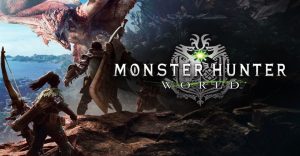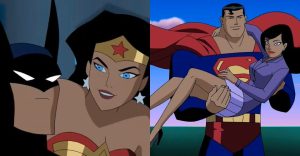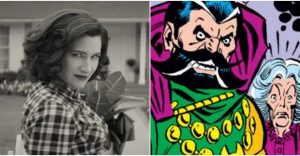Star Wars: Did Rise of Skywalker’s Ending Make Rey The Chosen One?

Did Rey become the new Chosen One in Star Wars: The Rise of Skywalker? When George Lucas launched the prequel trilogy with 1999’s Star Wars: Episode I – The Phantom Menace, he reinterpreted the entire saga as being oriented around Anakin Skywalker. To emphasize the point, he added a new Messianic element to the franchise, a mysterious prophecy of a Chosen One who would be born of the Force.
Although Lucas has always insisted Star Wars should not be seen as religious, he has still drawn upon religious ideas when shaping his universe. “I see Star Wars as taking all the issues that religion represents and trying to distill them down into a more modern and easily accessible construct,” he explained in an interview with Time Magazine back in 1999, “that there is a greater mystery out there.” Lucas had traditionally drawn more upon Buddhist concepts, but the Chosen One is clearly inspired by Christianity, right down to a Virgin Birth. The concept took viewers by surprise, feeling as though it was thematically at odds with the wider franchise.
There’s a sense in which that conflict is the key to understanding the Chosen One prophecy. In Lucas’ view, all religion should have room for mystery, and this prophecy was therefore a smart way of telling audiences there is far more to the Force than they have previously understood. He deliberately avoided giving the text of the Chosen One prophecy, thereby encouraging intense debate between fans as to whether Anakin was the Chosen One in the first place, and just how he fulfilled it. By now however, thanks largely to tie-ins, fans actually do have a fairly good idea of what it means to be the Chosen One — and that understanding has profound implications for Star Wars: The Rise of Skywalker.
The Chosen One In Star Wars Before Rise of Skywalker

The actual text of the Chosen One prophecy remained a mystery until last year, when Lucasfilm published Claudia Gray’s excellent novel Master & Apprentice. This is set shortly before Star Wars: Episode I – The Phantom Menace, and it focuses upon Qui-Gon Jinn and his apprentice Obi-Wan Kenobi. Qui-Gon is an enigmatic figure even among the Jedi, one of precious few Jedi to have studied ancient prophecies that appear to actually predate the Order. In the book, Qui-Gon becomes aware some of these prophecies seem to be being fulfilled in his presence, and they point to the birth of the Chosen One.
“A Chosen One shall come,” some ancient Force-user foretold, “born of no father, and through him will ultimate balance in the Force be restored.” The brevity is actually important, because in mystical texts, you have to interpret every single word with care in order to properly understand it. The term “balance in the Force” is particularly odd, and it was only clarified in Greg Rucka’s novel Guardians of the Whills. This included a quote from an esoteric Force group called the Ascendants of Mau, who provided the first ever definition of balance in Star Wars.
“The moment between breaths
Is the balance of the Force.
Between life and death,
Rest and action,
Serenity and passion,
Hope and despair.”
If this quote is correct — and, at present, it seems to be — then balance is a fleeting thing, as ephemeral as “the moment between breaths.” The Chosen One may bring “ultimate” balance in the Force, then, but logically he will not bring lasting balance, because that is a contradiction in terms. The Star Wars: The Last Jedi Visual Dictionary confirmed this interpretation, with Pablo Hidalgo, an important member of the Lucasfilm Story Group, noting Anakin brought balance to the Force when he killed Palpatine. According to Hidalgo, the Sith themselves were the source of the great imbalance, and their destruction was the fulfilment of the Chosen One prophecy.
What Palpatine’s Return In Rise of Skywalker Meant For The Chosen One

“The dark side of the Force is a pathway to many abilities some consider to be unnatural,” Palpatine declared in Star Wars: Episode III – Revenge of the Sith, and repeated in Star Wars: The Rise of Skywalker. Principal among these is the ability to conquer death, a power the Sith have long dreamed of attaining and that Palpatine himself had mastered. He had learned the long-forgotten power called Essence Transfer, that allowed his spirit to possess another host at the moment of death. Thus Darth Sidious himself became the imbalance in the dark side, because he could establish a Sith Empire that would never end, ruling as an Emperor who would never truly die.
The Emperor’s knowledge of Essence Transfer provides new context for the fateful final confrontation in Return of the Jedi. Note the parallels between Return of the Jedi and Star Wars: The Rise of Skywalker; in both films, the Emperor encourages someone to strike him down in rage. This is because Essence Transfer only seems to work if the potential host is under the influence of the dark side at the time of the Sith Lord’s death. Palpatine’s taunts to Luke in Return of the Jedi should, therefore, be seen as the Emperor’s attempt to persuade Luke to kill him in anger, so his spirit would be freed to possess the son of the Chosen One.
The battle on the Second Death Star was a trap, and Anakin Skywalker’s redemption was the only way out of it. If Palpatine had been killed in anger, whether by Darth Vader or Luke Skywalker, then his spirit would have been immediately able to possess a new host. But while Anakin did kill Palpatine, he did so under the influence of the light side of the Force, redeemed by Luke’s faith in him. All the Emperor’s schemes came to nothing, and he died what should have been a final death.
It wasn’t, of course. Palpatine had allied with Sith cultists on the ancient Sith redoubt of Exegol, a planet long lost in the depths of the Unknown Regions. Exegol is a unique world, one where the veil between life and death is thin, and there the cultists had been able to perform a ceremony that summoned the Emperor’s spirit from the beyond to possess a clone body. It’s tempting to conclude this somehow invalidates Anakin’s achievement, but that isn’t really the correct interpretation. Star Wars: The Rise of Skywalker itself confirms Anakin really did bring balance to the Force, courtesy of a brief message from Anakin’s Force Ghost. “Rey,” Anakin Skywalker called out. “Bring back the balance, Rey, as I did.” Anakin succeeded in his mission, the Emperor really did die, and thus he really did bring back the balance. The Sith, however, cheated fate through another means. That should not be seen in any way as undermining Anakin’s redemptive triumph on the Second Death Star. It should hardly be a surprise to learn the Sith didn’t play by the rules, and instead attempted to find a way to cheat the prophecy.
Does The Rise of Skywalker Make Rey The New Chosen One?

This, of course, raises an intriguing question; is Rey the new Chosen One? Strictly speaking, the answer is no. There are two components to the Chosen One prophecy; their origin, and their mission. The Chosen One is a specific individual who shall be “born of no father.” Rey’s father may have been a failed clone of Palpatine, but he was a father nonetheless, and thus Rey cannot meet the criteria to be called the Chosen One. Rather, it is still the case that the one and only Chosen One is Anakin Skywalker, a being who was conceived by the will of the Force itself, and who had no father.
But Rey does share the mission of the Chosen One, as indicated by Anakin’s words on Exegol. Like Anakin, she was tasked with destroying Darth Sidious, the greatest of the Sith, the one who was himself an imbalance in the Force. It’s interesting to note the Chosen One himself was involved in that battle in two ways, not just one. Anakin’s voice was speaking to Rey, encouraging her, guiding her along with those of the other Jedi. And, significantly, she was wielding his old lightsaber. A lightsaber is no ordinary weapon; it contains a kyber crystal, and a Jedi bonds with their lightsaber and the kyber crystal contained within it. Thus that lightsaber contained a part of Anakin’s spirit, a hint of his power in the Force. That is presumably why Rey heard the blade calling to her in Star Wars: The Force Awakens: because the part of Anakin Skywalker within it sensed she too was destined to stand against the darkness. Arguably, then, Anakin’s twofold presence suggests the Battle of Exegol is just an extension of the Chosen One prophecy, a second fulfilment of it if you will. “Through him will ultimate balance in the Force be restored,” the prophet declared, and that was still the case on Exegol. Rey was simply Anakin’s champion.
Anakin Skywalker died bringing balance to the Force, but Rey intends to do something that may well be even more difficult; to live for it. According to Lucasfilm, this is what it means to be a Skywalker: to be an agent of balance. “I like the idea that she’s going to be our Skywalker, but she’s not a Skywalker,” Lucasfilm’s Pablo Hidalgo noted in a meeting of the Story Group transcribed in The Art of Star Wars: The Rise of Skywalker. “Then, for our purposes, ‘the Skywalker’ is really a metaphor. It doesn’t have to be something that’s directly connected to blood.” Thus Star Wars: The Rise of Skywalker ends with Rey taking Anakin’s surname as her own, grafting herself into the continuation of his mission. She is a Skywalker, but she is not the Chosen One; she lives for the Chosen One’s mission, even though she does not share his origin. It’s actually quite a clever way of bringing the Star Wars story full circle — even if it wasn’t handled terribly well.
About The Author


















